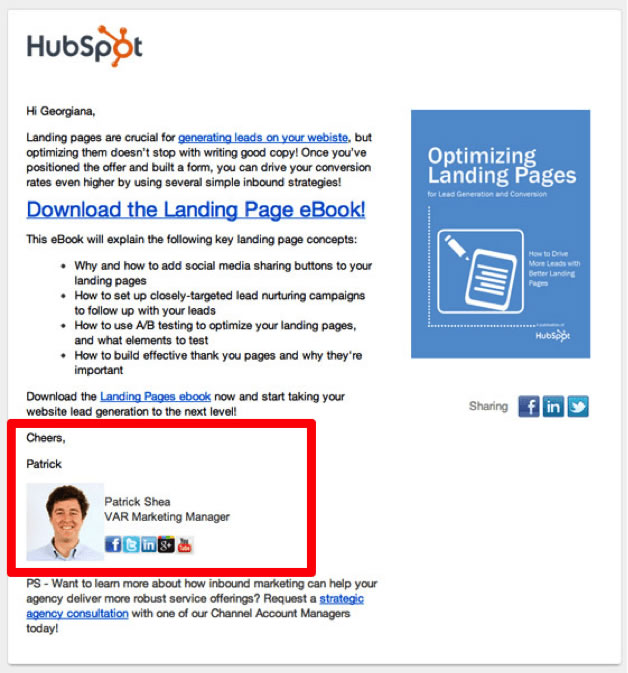Asking your customers to give their opinions on industry matters or share their thoughts on your products is one of the most effective methods of conversational marketing.
However, to get people talking, you first need to generate content that starts a conversation. If you haven’t done so already, starting a company blog is highly recommended. By writing about topics that are relevant and interesting to your audience, you can capture their attention–but you can create further engagement by starting a dialogue in the comments section.
A more direct way of seeking out your customers’ opinions is by inviting them to participate in a survey, to get insight on their experience with your brand. This gives your buyers the opportunity to voice their opinions, and it gives you valuable feedback on your brand’s performance.
And why not offer incentives for participation? Strategies like social media contests or loyalty programs help to drum up excitement about your brand and can encourage people to actively engage with you.
As technology continues to revolutionize brand strategy, the way marketers and customers interact is changing. Marketing is no longer one-sided propaganda generation–rather, a brand’s reputation evolves via interactions with consumers on the web. These interactions are part of an increasingly important brand strategy called conversational marketing.
If your enterprise has yet to begin conversations with your clients, there’s no better time than now. Read on to learn what conversational marketing involves and some of the easiest and most effective ways to implement it into your marketing strategy.
Conversational Marketing: Definition
“Conversational marketing” refers to any instance in which a business and buyer engage in discourse together, making that business more customer-centric than ever before. It’s an attempt to connect with the community; to allow a two-way conversation about brands and products.
While the content and style of conversational marketing is highly varied–as it should be tailored to each brand’s individual target audiences–there are several tips you can follow to establish different ways to converse with potential or existing clients.
Personalize Your Content

The most obvious benefit of conversational marketing is increased personalization for your customers. Personalization has been proven to increase conversions and improve lead nurturing, but only 6 percent of marketers are using social data, for example, to personalize their content, and only 19 percent are personalizing through behavioral data. With so few marketers on board, instating a personalization strategy of your own can make your content stand out from the crowd.
Make sure to personalize every step of your buyers’ journeys. This could begin with an email campaign. To personalize your email campaign, segment your email list based on the ways they have interacted with your brand in the past. Next, use dynamic tags to include your recipient’s name or their company’s name in the subject line and the salutation of your email. Finally, your email should include a call to action that inspires your recipient to take the next step in the conversion process. You can even personalize your landing pages by using smart fields to pre-load your recipient’s information into a lead form, cutting down the effort they need to put forward to convert.
Personalization is the first step in instigating a conversation with your customers via email. The next step is to prompt engagement–try adding questions and inviting the recipient to respond. You can also create a thank you email triggered when a user converts, to make them feel valued. Make sure to offer further opportunities for interaction by including social or sharing buttons.
No matter what the content, you should use everyday language. Conversational marketing should be (as its name implies) conversational. Put your fanciest jargon and professional tone aside, and try to appear more lax to your audience.
Ask for Input

Asking your customers to give their opinions on industry matters or share their thoughts on your products is one of the most effective methods of conversational marketing.
However, to get people talking, you first need to generate content that starts a conversation. If you haven’t done so already, starting a company blog is highly recommended. By writing about topics that are relevant and interesting to your audience, you can capture their attention–but you can create further engagement by starting a dialogue in the comments section.
A more direct way of seeking out your customers’ opinions is by inviting them to participate in a survey, to get insight on their experience with your brand. This gives your buyers the opportunity to voice their opinions, and it gives you valuable feedback on your brand’s performance.
And why not offer incentives for participation? Strategies like social media contests or loyalty programs help to drum up excitement about your brand and can encourage people to actively engage with you.
Lend a Helping Hand

While conversational marketing is highly beneficial for your brand, you should ensure that it works similarly for your customers in terms of customer service and support. In other words, you can make your customer service conversational by offering customers personal attention when they’re having a problem. It’s important to engage as much as possible with your customers during the assistance process, as this is when they might be most frustrated with your brand–and personalized problem solving, rather than automated helplines, can make all the difference.
But how do you start the conversation? There are several different methods you can try. One of the most prominent channels of communication is social media. Personally responding to posts about problems with your product or service helps to humanize your brand and gives your customers the precise assistance they need. Plus, because these posts are public, others will see your brand making an extra effort.
You can also offer live customer service, so that anyone who calls with a problem or question will receive a response punctually from a real human being. Alternatively, integrate a live chat function into your website so that customers don’t even need to pick up the phone. 44 percent of online consumers have ranked live chat as the most important feature a website can offer–plus, it has been proven to cut down on expenses and increase sales. The popularity and success of live chat demonstrates just how powerful conversational marketing can be.
Key Takeaways
- “Conversational marketing” refers to any instance in which a business and buyer engage in discourse together, making that business more customer-centric than ever before.
- Personalization increases conversions and improves lead nurturing, making it the perfect way to start a conversation with your customers.
- Asking for your customers’ input captures their attention and allows them to feel more involved with your brand–and adding an incentive in exchange for their input drums up even more excitement.
- Conversational customer service adds a personal touch in the crucial moments when your customers might be the most frustrated with your brand.
Pro Tip
Responding to posts about problems with your product or service helps to humanize your brand and gives your customers the precise assistance they need.

